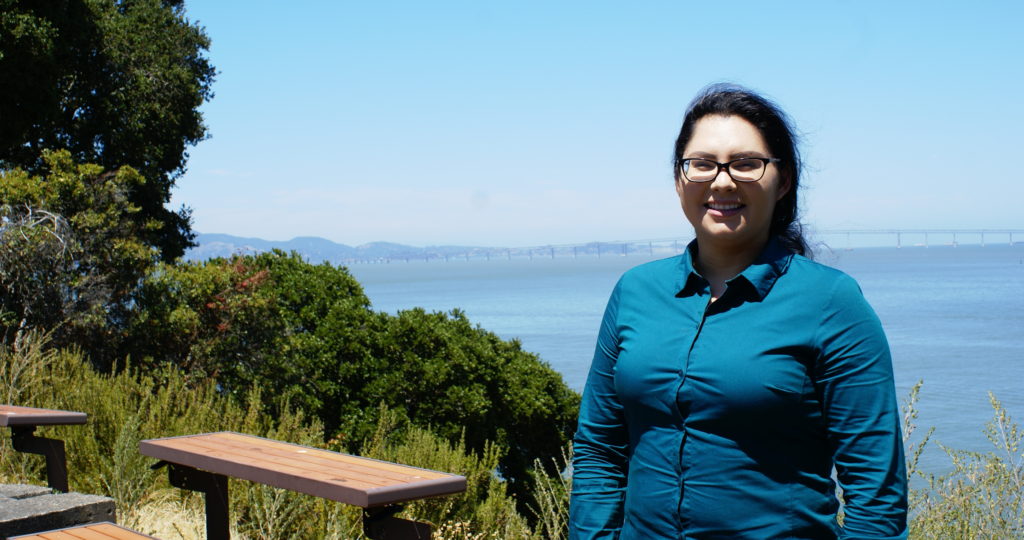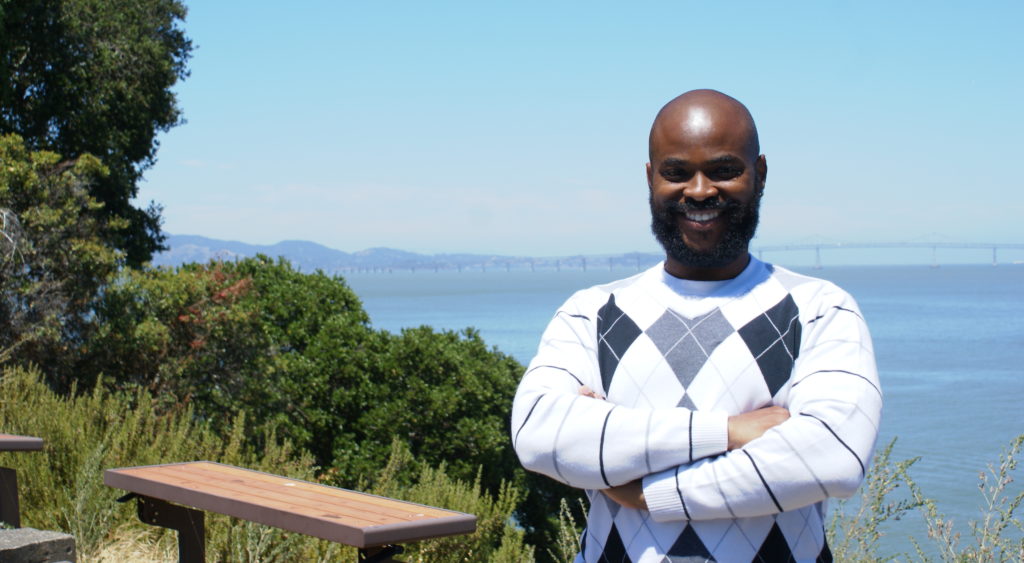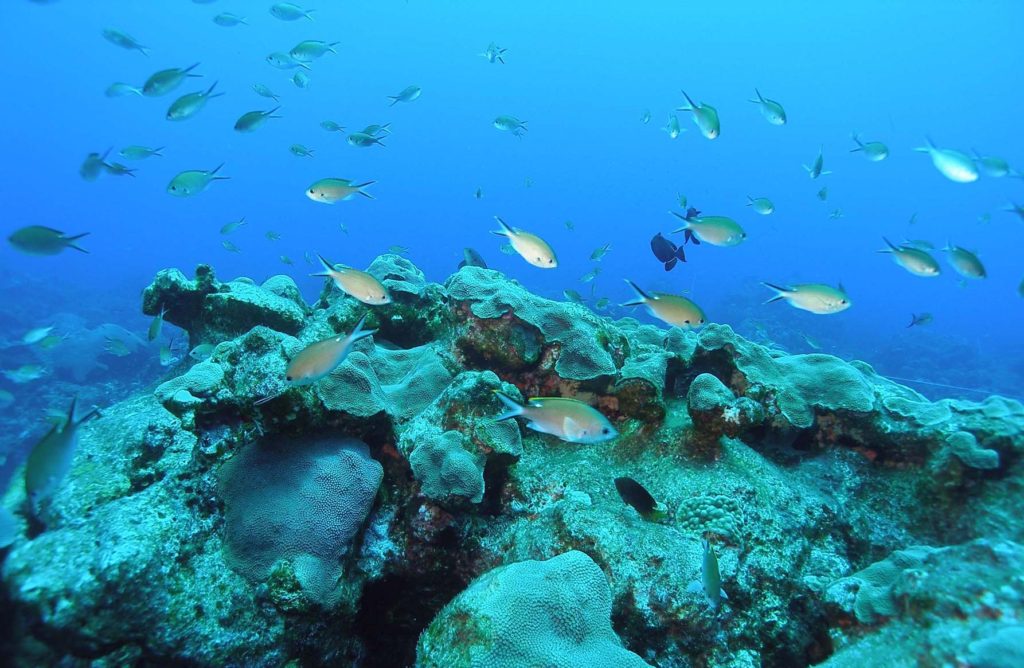A communicator with a passion for environmental and social issues, Christina Arena left her mark on the environmental film world with the 2018 series Let Science Speak. The short documentary videos go beyond the “war on science” headlines to humanize scientists and let them tell their own stories. Today, she’s donating her time and talent to help produce videos for the Smithsonian Environmental Research Center (SERC). Her newest short film will premiere this April at the Smithsonian’s digital Earth Optimism Summit April 22-24. In this Q&A, she talks about what gives her purpose and optimism. Click to continue »
Christine Arena: Determined Optimism and Letting Science Speak
Posted by Kristen Goodhue on April 14th, 2020Intern Jessenia Suarez Talks Heatwave Biology, Being Latina in STEM
Posted by Kristen Goodhue on February 14th, 2020by Alison Haigh
Science comes with some wacky challenges. In the world of marine invasions, that might include sunburns from afternoons tying equipment to docks or worrying about how much seafood powder to feed a plate of invertebrates. But when someone dons a lab coat, they don’t shed their homelife, background, and personal responsibilities. At SERC-West, intern Jessenia Suarez got to know some of those unique challenges while working on her research project. But one of her biggest challenges was outside the lab.
Suarez is a senior marine biology major at San Francisco State University who found her passion for biology in her second year at community college. In summer 2019, she studied how a group of underwater creatures known as the fouling community responds to changes in water temperature. She found the work exciting and refreshing—but she admits that her biggest challenges were balancing the internship with a two-hour commute and finding childcare for her two-year-old daughter, Leia.
“I would spend about an hour and a half with her when I got home, and then it would be time to sleep,” she said. “Not only that, but I was still working my other job [as a CVS pharmacy technician]—very few hours, but it’s still time away from her. It was hard for me, and it was hard for her too.”
Besides caring for her daughter and working a second job, she also had to balance classes. Yet despite a heavier workload than the average intern, Suarez loved the internship experience, and she’s passionate about pursuing research after her degree.
“I had an idea that I liked doing research, but being in charge of my own project brought it to a whole new level, ” Suarez said. “I now know what to expect, and have a feeling that I can handle it.” Click to continue »
Could Seaweed Save Oysters? Teacher-Fellow Jason Thomas Brings Science From Beach To Classroom
Posted by Kristen Goodhue on February 14th, 2020by Alison Haigh
If there’s any constant in SERC research fellow Jason Thomas’ diverse career, it’s that he’s always looking for opportunities to learn something new. He’s a science teacher, and that’s one thing that brought him to education: It keeps him in a constant state of learning.
Originally, though, he wanted to be a doctor. After getting a bachelor’s in sociology and a post-baccalaureate in biology, he worked in a molecular lab analyzing octopus eyes, and then in a mosquito hatchery. He then got a medical doctorate—but after having trouble securing a residency, he found himself going back to school for a master’s in teaching.
“Once, someone called me ‘Graduation Jason’ because all I do is graduate,” Thomas joked. Now that he’s a science teacher at Browning High School in Long Beach, California, he’s helping his students graduate with the skills they need to pursue careers in STEM.
But even on his summer breaks, he’s still learning. This summer, the Smithsonian Environmental Research Center’s West Coast lab in Tiburon, California, hosted Thomas through the state’s STEM Teacher and Researcher (STAR) program. The program gives early-career science teachers authentic research opportunities. Now that he’s back at school in Long Beach, he’ll bring two summers of research experiences to inspire his students. Click to continue »
Do We Live in the Plasticene? 12 Words to Know for the Age of Plastics.
Posted by Kristen Goodhue on January 15th, 2020by Kristen Minogue
Welcome to the Plasticene. If you’re under age 70, it’s possible you’ve lived in the Plasticene for your entire life. It’s a new geologic age some scientists have proposed to mark the near-universal spread of plastic around Earth. Since the 1950s, researchers say, we’ve been living in the Age of Plastics.
You may have heard of another relatively new time period—the Anthropocene, or Epoch of Humans. (Yes, we live in confusing times.) However, the Age of Plastics isn’t meant to replace that. Instead, the Age of Plastics is a smaller piece of the Epoch of Humans that started in the mid-20th century. Scientists contend it deserves special recognition because, unlike many things we leave behind, plastics can leave a distinct mark in the fossil record.
Many strange things have begun appearing in the Age of Plastics, especially in our oceans and along our shores. Some are so new, scientists are just finding words for them. What do you call an animal that makes its home on plastic? How about one that accidentally swallows a bottle cap? For that reason, a team led by Linsey Haram from the Smithsonian Environmental Research Center, Williams College-Mystic Seaport and Hawai’i’s International Pacific Research Center put together a list of terms poised to become more common in the future. Here are 12 words that describe the new age:
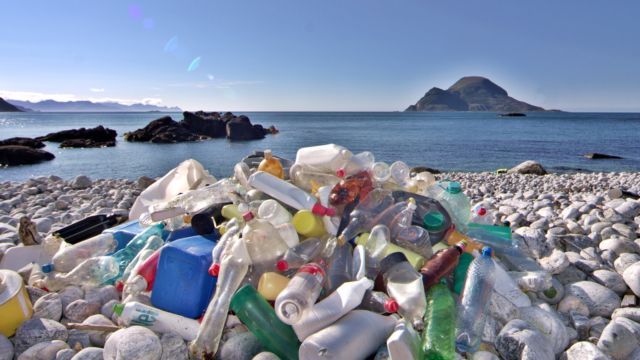
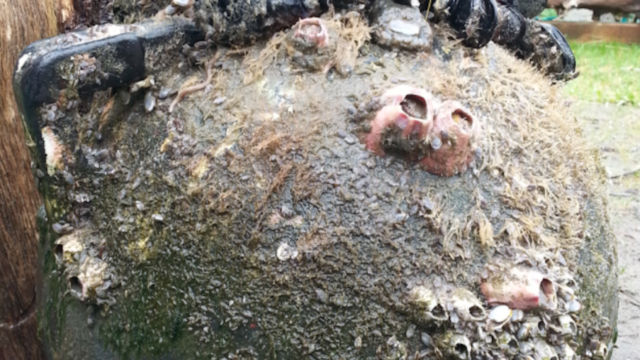
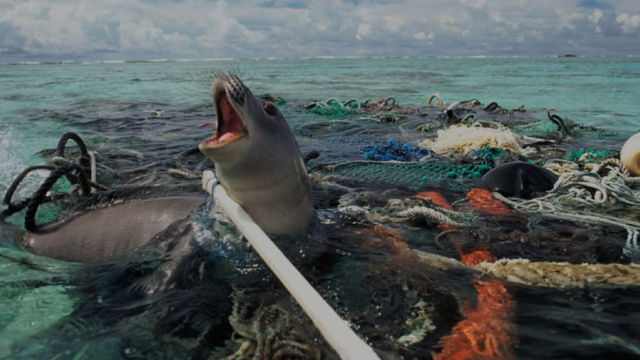
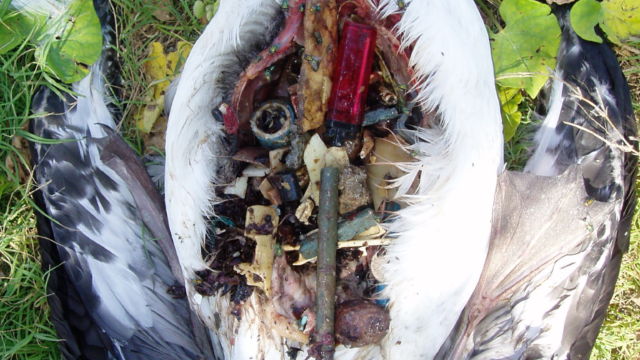
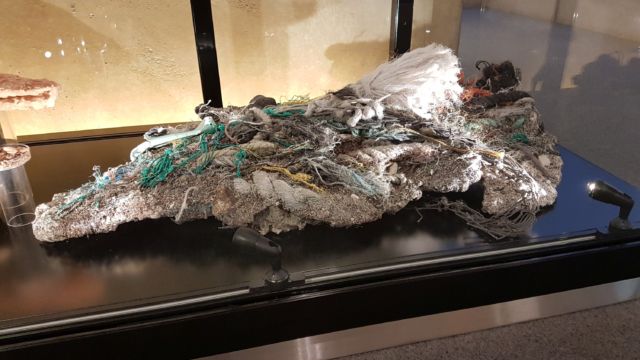
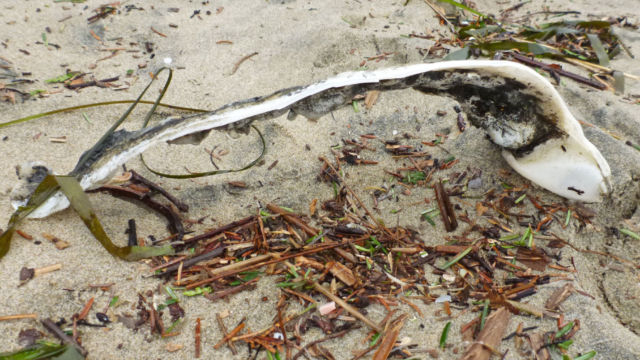
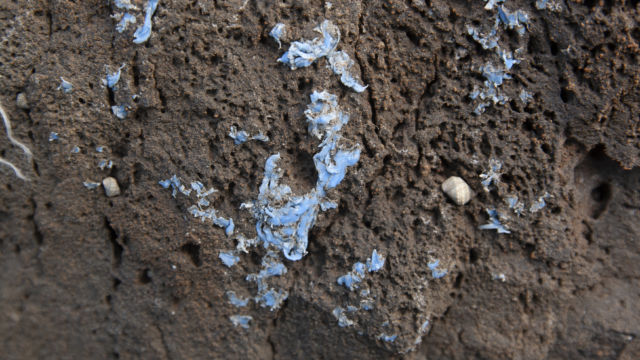

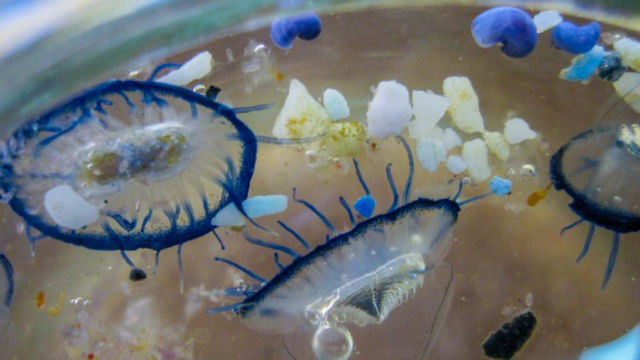


The report, “A Plasticene Lexicon,” appeared in the January 2020 issue of Marine Pollution Bulletin. It’s available for download here: https://doi.org/10.1016/j.marpolbul.2019.110714
To read about the discovery of plasticrusts by Ignacio Gestoso and the team at Portugal’s Marine and Environmental Science’s Centre, check out this CNN article or find the journal article here.
Learn more:
Video with Linsey Haram: Can animals live in the Great Pacific Garbage Patch?
Web Article: Tsunami Enabled Hundreds of Species to Raft Across the Pacific
Eight Ways We Can Save the Ocean’s Oxygen
Posted by Kristen Goodhue on December 10th, 2019by Kristen Minogue
The ocean is losing its breath. Two years ago, an international team of scientists known as GO2NE (the Global Ocean Oxygen Network) published a report in Science with a stark picture of oxygen loss in Earth’s waters: In the open ocean, the amount of water with zero oxygen has spiked fourfold since the mid-20th century. In coastal water bodies, places with dangerously low oxygen (2 milligrams per liter or less) have increased more than 10-fold. It’s a problem not just for animals, but for people and economies—especially those that rely on tourism or subsistence fishing.
On Dec. 7, a new report emerged from the International Union for the Conservation of Nature. The ocean could lose 3-4% of its total oxygen by the end of the century if nothing changes, with losses even higher in the top, biodiversity-rich 1,000 meters. Large fish like tuna, sharks and marlin are among the most vulnerable. In the closing chapter, led by Denise Breitburg of the Smithsonian Environmental Research Center, they created a massive blueprint for resuscitating the ocean.
We’ve pulled out the highlights below, but the key lies in cracking two global conundrums—nutrient pollution and climate change. Nutrient pollution happens when chemicals like nitrogen and phosphorus stream into the water and fertilize massive growths of algae, which suck oxygen out of the water. Climate change’s role is more subtle, but just as powerful: Warmer water can’t hold as much dissolved oxygen. Warm water also doesn’t mix as well, so oxygen from the atmosphere that’s abundant near the ocean surface doesn’t reach everywhere that needs it.
Fortunately, these two problems are linked. Cleaning up nutrient pollution can help solve climate change, and vice-versa—and the ocean will breathe easier for it. Here are eight highlights from the new report: Click to continue »
Sarah Donelan: How Parents Prep Offspring for Tough Lives Before Birth
Posted by Kristen Goodhue on November 22nd, 2019by Kristen Minogue
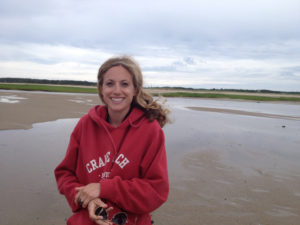
Sarah Donelan in Wellfleet, Massachusetts.
(Credit: Patricia Donelan)
Every parent wants to give their children the best shot at life. But sometimes, this means more than protecting newborns after birth. Some species can prepare offspring for tough conditions before they enter the world. It’s called transgenerational plasticity. Sarah Donelan, a Smithsonian Environmental Research Center postdoc, has spent years piecing together how it works. This November she published a new article highlighting how humans could be changing this age-old parental strategy. Discover more in the Q&A here.
This interview has been edited and condensed for clarity. Click to continue »
How To Throw An (Almost) Zero-Waste Music Festival
Posted by Kristen Goodhue on November 21st, 2019
A capella group Washington Revels Jubilee Voices, at the Chesapeake Music Festival.
(Credit: Kristen Minogue/SERC)
by Sarah Wade
This article originally appeared in the November issue of the Smithsonian’s Sustainability Matters newsletter.
One small bag that could fit into an office-sized trash can. That’s all the waste that remained after a concert with more than 300 attendees, over 50 staff and volunteers, eight performing groups and four food vendors. Surrounding it, eight recycling containers and four composting bins waited for pickup. By and large, the first Chesapeake Music Festival achieved its goal of near-zero waste, to the exhausted but happy relief of its organizers.
Months of effort went into that lone trash bag: working with vendors, buying supplies, and encouraging the public to bring their own water bottles to cut down on single-use plastics.
Part of the Smithsonian Year of Music, the Chesapeake Music Festival on Sept. 14 included performances from Don Shapelle, Jeff Holland and That West River Band, Washington Revels Jubilee Voices and other folk singers from around the Bay. But when the Smithsonian Environmental Research Center (SERC) and the Arundel Rivers Federation teamed up to hold it, they had an even loftier target: make it zero waste. Click to continue »
What’s the Perfect Temperature
to Bake Your Soil?
Posted by Kristen Goodhue on November 15th, 2019
by Kristen Minogue

Soils don’t get much credit for their work powering the environment. Even among scientists, they’re routinely overshadowed by their flashier plant neighbors. But as the planet heats up, hidden soil microbes are on the verge of giving plant growth a serious boost.
However, there’s a hiccup in the system. In a new global warming study, ecologist Genevieve Noyce discovered soils and plants are just a couple degrees out of synch.
It boils down to one crucial ingredient: nitrogen. Plants need nitrogen to grow, so it’s a major component of most fertilizers. In the absence of fertilizer, plants get their nitrogen from soil microbes. But they’re at the mercy of supply and demand. In most environments on land today, soil microbes can’t produce nitrogen fast enough to meet plant demand.
In a futuristic experiment, Noyce and her colleagues baked patches of wetland soil to see if that would change in a warmer world.
Click to continue »Female Blue Crabs Are Running Low On Sperm—Unless They Die Young
Posted by Kristen Goodhue on October 25th, 2019by Kristen Minogue
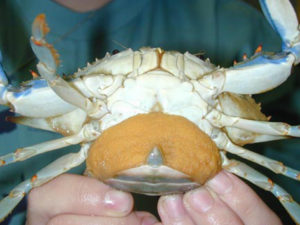
A female blue crab can produce sponges like this three times a year, each with millions of eggs. But if male crabs are in short supply, she may not have enough sperm to fertilize all her eggs.
(Credit: SERC)
If you want to save a fishery, protect the females. That’s been the operating logic for decades among fishery managers, and with good reason: Females carry the next generation. Throw one mature female back, and she could produce thousands or millions more offspring. But for female blue crabs, the story isn’t always so simple.
In a study published Oct. 24, scientists from the Smithsonian Environmental Research Center (SERC) confirmed that a potential snag is in fact happening in Chesapeake Bay. Without enough male blue crabs to go around, some females aren’t getting enough sperm to reach their full reproductive potential. If they survive past their first year of spawning, they risk running dry. Click to continue »
Because of Her Story: Jane Lubchenco, Voice for the Ocean
Posted by Kristen Goodhue on October 3rd, 2019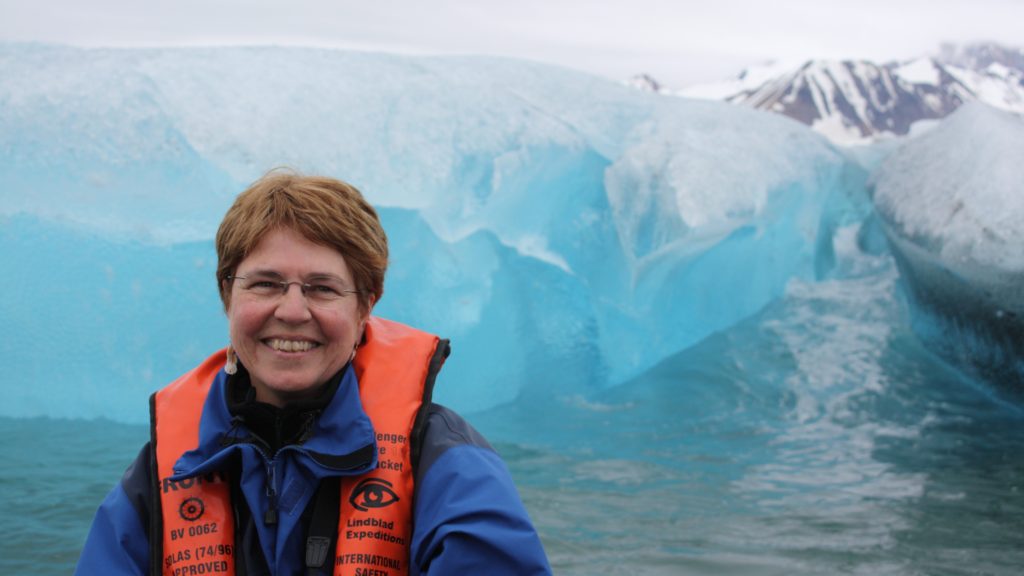
Jane Lubchenco in the Arctic. (Credit: NOAA)
by Kristen Minogue
This October, you’re invited to meet a woman who has spent decades working to save the ocean. The journey has taken her from the coasts of Oregon to Panama, New Zealand, South Africa and the Seychelles. Her name is Jane Lubchenco. In 2009, she broke ground as the first woman to head the National Oceanic and Atmospheric Administration (NOAA). But her history with the ocean began long before that.
She’ll speak in person about the future of our global ocean on the evening of Oct. 15, as part of the Smithsonian American Women’s History Initiative and the finale for the Smithsonian Environmental Research Center’s 2019 evening lectures. The full details are here. (Spoiler: It’s free.) But if you’d like a preview, here are a few snapshots from Lubchenco’s life, and her unconventional path to become one the most powerful people speaking up for the seas: Click to continue »



